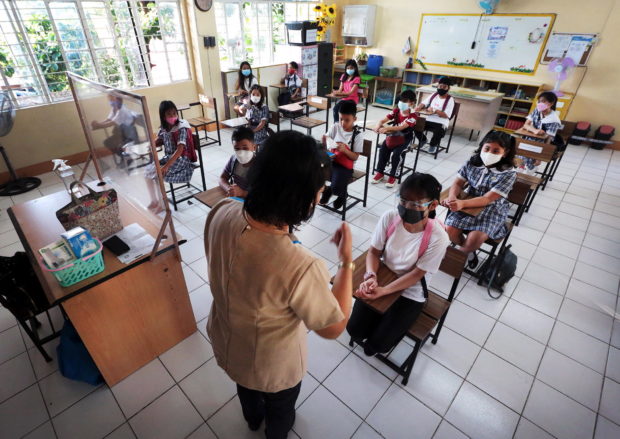
A LOT ON HIS PLATE | Yet another item on President Marcos’ plate are the concerns raised by school administrators, educators and parents about the government’s plan to resume in-person classes in public and private schools by Nov. 2 this year. Mr. Marcos allayed some of these when he declared that “blended learning” would continue beyond Oct. 31 in “specific areas.” —GRIG C. MONTEGRANDE
MANILA, Philippines — “Babalik na namin kami sa pagtuturo ng sardinas (We’re back to teaching in classrooms packed like sardine cans.)”
This was how one teacher quoted at an online forum on Friday described the Department of Education’s (DepEd) policy of having schools return to full in-person classes by Nov. 2.
“That has been the description even before, but what surprised me was the remark of another teacher: ‘Babalik na naman kami sa pagtuturo ng Ma Ling,’” said Lizamarie Olegario, a professor of educational psychology at the University of the Philippines-Diliman, who noted that the metaphor this time was in reference to a brand of canned luncheon meat.
The forum organized by the Movement for Safe, Equitable, Quality and Relevant Education tackled the state of the country’s education sector amid the COVID-19 pandemic.
Olegario said the teachers likened the congested classrooms to canned goods because “the bodies almost blend” in the jampacked rooms.
Uneven circumstances
During the implementation of limited face-to-face classes in the previous school year, schools were allowed to accommodate only a maximum of 12 pupils per classroom in kindergarten.
As for Grades 1 to 12, administrators were advised to consider the “varying classroom sizes and required one-meter physical distancing” in determining the number of students per room.
But under DepEd Order No. 34 issued by Vice President and Education Secretary Sara Duterte, there would be no limit to the number of students allowed in in-person or face-to-face classes by November.
Before that, “blended learning” will be adopted with the resumption of the school year on Aug. 22.
Duterte herself acknowledged the uneven circumstances affecting the schools.
“We did not put an exact class size because the situation varies in every school,” she told reporters in a recent interview, adding that the DepEd will come up with a directive intended to resolve the problem of congestion and overcrowding in classrooms.
Consistency of instruction
At the forum, Olegario said: “When I was observing classes back in 2017, if you want to go to the restroom, you can’t easily go out.”
Not all classrooms are overcrowded, but bigger classrooms are accompanied by other problems—with teachers having a hard time looking after students and ensuring the consistency of their instruction.
Olegario cited the experience of other countries as she pointed out that smaller classrooms, with just the right number of students, allow better one-on-one student-teacher interaction, as well as better learning and discipline.
She suggested continuing blended learning in a given school week for students coping with congested classrooms amid the still prevalent threat of the pandemic.
For instance, each classroom may be divided into two groups—with one holding in-person classes and the other, home-based activities. The two groups may then alternate their learning formats every other day, she said.
“The learning time of the students is not dependent on [when] we meet [with] them,” Olegario said. “Hopefully, the DepEd would hear [these recommendations].”